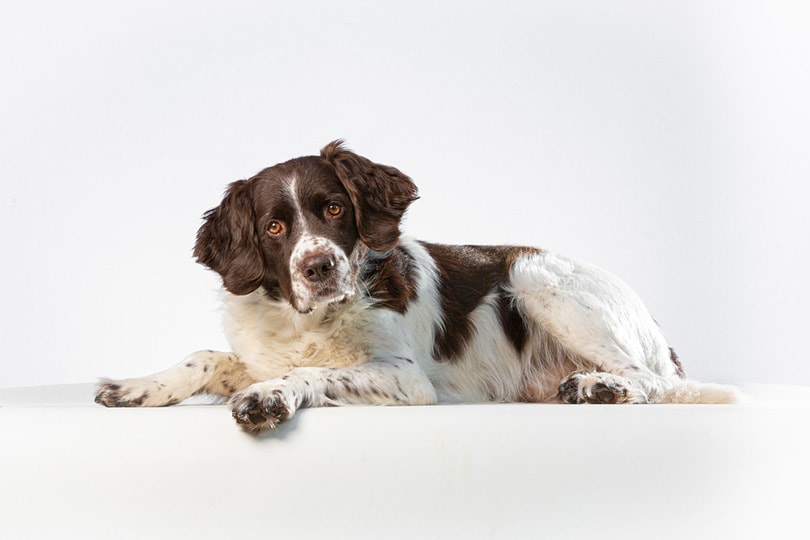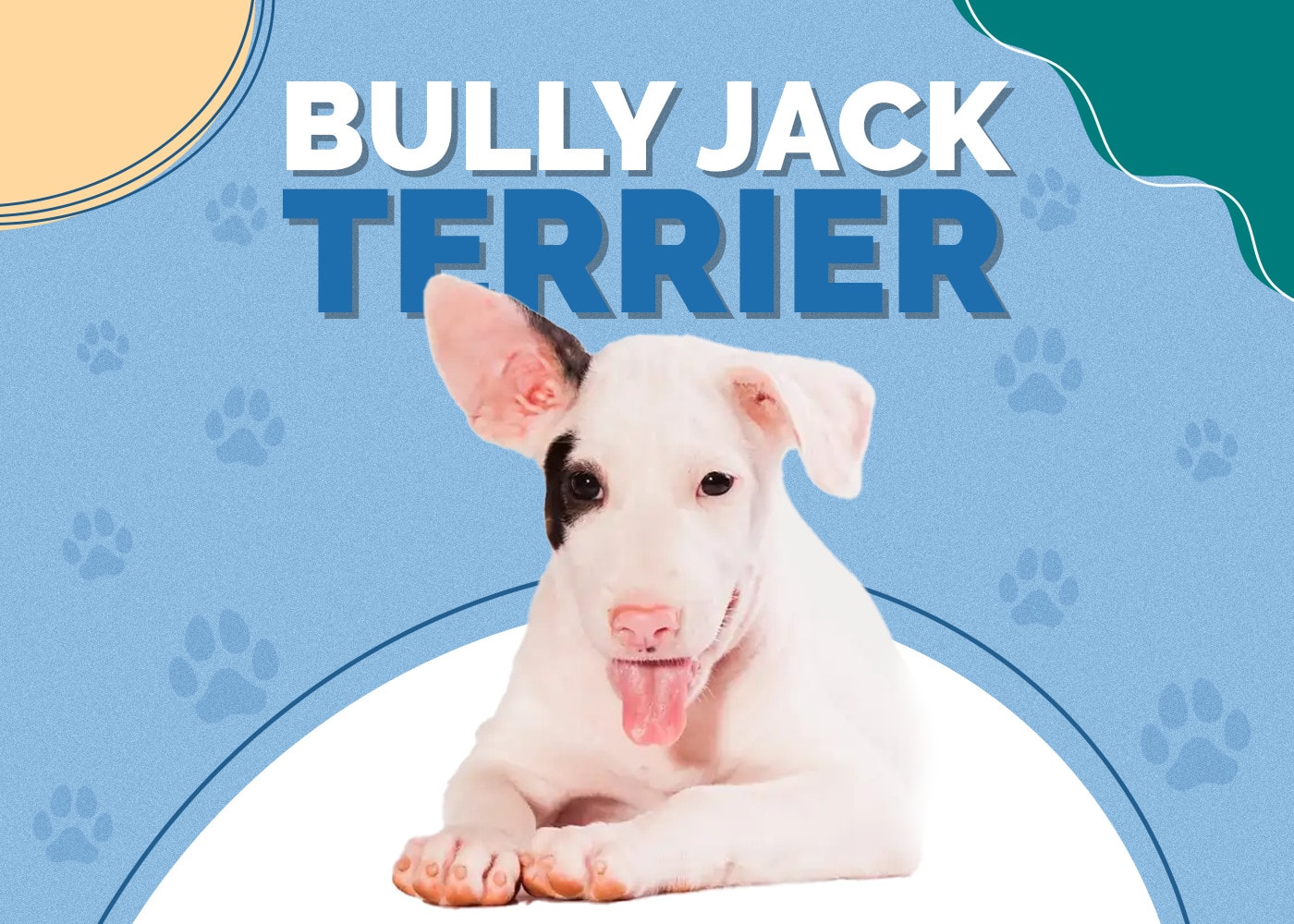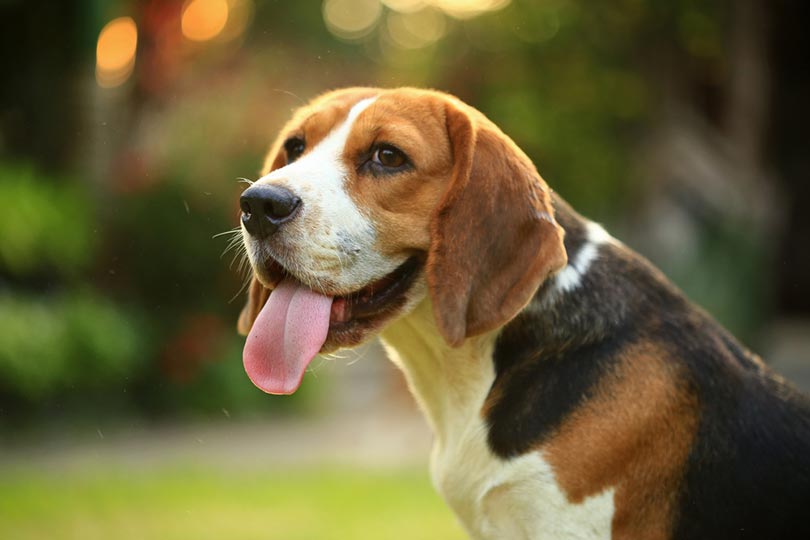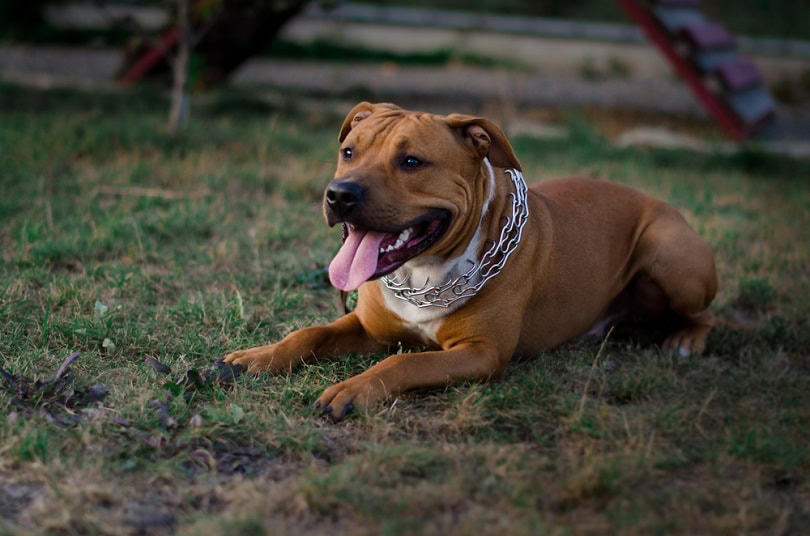Drentsche Patrijshond: Dog Breed Info, Pictures & Facts

Updated on

| Height: | 21–23 inches |
| Weight: | 40–60 pounds |
| Lifespan: | 12–13 years |
| Colors: | Black, brown, white |
| Suitable for: | Families of all sizes, homeowners with large yards, owners who hunt, active owners |
| Temperament: | Energetic, intelligent, loving, loyal, relaxed |
The Drentsche Patrijshond is a beautiful and adorable breed that originated as a gun dog in the Netherlands. They are a spaniel, so they are medium sized with wavy fur and cute, floppy ears.
Although the Drentsche Patrijshond is a hunting breed, they are far less intense than most dogs that have been bred for hunting. They’re still quite adept at and love participating in the sport, but in their free time, they are quite relaxed and loving.
They love their owners and are generally friendly toward all familiar faces. They also tend to warm up to strangers quickly. Here, we discuss everything else that you need to know about this breed so you can decide whether a Drentsche Patrijshond is your ideal dog.
Drentsche Patrijshond Puppies
The first thing you’ll need to know about these dogs before you commit to bringing a puppy home is that they have a high energy level and need extensive exercise every day. You should be prepared to set aside about an hour of exercise time on a daily basis right from the time you bring your pup home. Even as puppies, these dogs will be high energy and need an outlet in some kind of exercise routine.
Additionally, you should be aware that these dogs have a tendency to bark at unfamiliar noises, as well as at strangers approaching your house or simply walking by. They have the desire to protect your home at all times, and this does mean you’ll experience some barking. As such, these dogs are not well suited for apartment life or for those with noise restrictions. It can be trained out of them a bit, but you likely won’t stop their barking altogether.
Lastly, since these dogs are predisposed to hip dysplasia, you should be careful not to exercise your pup on hard surfaces like cement or asphalt while their puppy joints are still developing. Take your dog for walks on grass or dirt as often as possible to help reduce their risk of joint damage early on.
Temperament & Intelligence of the Drentsche Patrijshond 🧠
The Drentsche Patrijshond is a sweet and loving dog that loves their human companions and adores spending time with them. Whether you’re hunting, exercising, or relaxing after a day of work and play, these dogs will happily stand close by your side.
They are highly intelligent, loyal, and friendly, so you’ll never have to worry about your pup showing aggression or being wary around strangers. They may alert you to the presence of someone who is unfamiliar, but they warm up quickly to just about anyone they meet.
These dogs love hunting, but they’re also gentle and relatively calm when they’re at home or in familiar places, as long as they get their daily exercise. They’re usually happy dogs that bring joy and laughter to just about any home.
Are These Dogs Good for Families? 🏡
Drentsche Patrijshonds make wonderful family dogs. They are excellent with children and will get along with any family member, young or old. They are intelligent and somehow know that kids need to be handled and played with more gently, so you’ll never have to worry about your pup playing too rough with your kids.
These dogs love human interaction, and although they don’t mind being alone for short amounts of time on occasion, they prefer being around their owners. They do best in homes where there is always someone around to spend time with or give them attention. Drentsche Patrijshonds are also playful, so the more people you have in your home to engage with them, the better!
Lastly, these dogs are highly affectionate. While most owners are fine with this, some prefer a pup that is more standoffish. If you aren’t looking for a dog that will be happy cuddling with you and giving you kisses, this may not be the breed for you.
Does This Breed Get Along With Other Pets? 🐶 😽
The Drentsche Patrijshond’s friendliness toward humans will extend toward just about any dog they live with or meet on walks or at dog parks. They love companionship and often won’t mind if the friend they spend time with has two legs or four! They rarely show aggression, so you shouldn’t need to worry about your pup interacting or living with other dogs.
Since the Drentsche Patrijshond was bred as a hunting dog, they have a propensity for hunting and chasing smaller animals. This means they don’t do particularly well in homes with cats or other small animals, as they will see them as a hunting opportunity. They aren’t recommended for owners who have small animals, and their tendency to lunge at or chase small animals like squirrels or rabbits outside means you should always walk your pup on a leash and a sturdy harness. Keeping control of your dog while exercising outside is critical to prevent them from running off in pursuit of a small animal.
Things to Know When Owning a Drentsche Patrijshond
Food & Diet Requirements 🦴
Your Drentsche Patrijshond will have a fairly hearty appetite despite their medium size, so you should expect to feed your pup around 2 cups of food each day. Given their activity level and affinity for exercise and play, you’ll want to make sure to provide your dog with a diet that is high in protein, which is where most of their energy will come from. Foods with high percentages of fillers like corn and wheat don’t do much for your dog and should be avoided.
Drentsche Patrijshonds need more frequent feedings during puppyhood, so you’ll need to adapt your feeding schedule to your dog’s age. Assuming that you first get your dog when they’re around 8 weeks old, which is standard, for the first 4 weeks you’re with your pup, you’ll want to split their food into four meals throughout the day. From the time that they hit 12 weeks to the time that they’re about 1 year old, two to three meals a day will suffice. Finally, adult Drentsche Patrijshonds should be fed twice a day only.
It’s important to note that these dogs are prone to weight gain despite their activity level, and they will eat more than they should if you let them! Don’t leave food out during the day like you might with other breeds, and limit treats for your dog, especially during training. If you notice your pup gaining weight beyond the breed’s recommended weight range, consider offering less food during mealtimes or consulting your vet for additional recommendations.
Exercise 🐕
As dogs bred to hunt, Drentsche Patrijshonds are rather active and will need around an hour of exercise each day. They love being with their owners, so the best exercise for them will consist of walks, runs, or other activities where they can exercise by your side.
These dogs will be playful and generally energetic throughout most of the day, but it’s important not to assume your dog has gotten their energy out during playtime. Even on top of normal play, you should still provide your pup with an hour of dedicated exercise each day.
Given their high intelligence, you can replace some playtime—but not physical exercise!—with mental stimulation to keep their minds sharp. Puzzle toys, snuffle mats, or other mentally engaging toys or games are great options for getting your Drentsche Patrijshond to expend energy and use their smarts.
Training 🦮
Drentsche Patrijshonds are intelligent and loyal dogs. While these two traits normally mean the pup will be easy to train, this is not the case with these dogs. They do pick up on new tricks, commands, and logic games quickly and with ease, but they need determination, time commitment, and gentle persistence from their trainers before the things they learn will be internalized.
Drentsche Patrijshonds are rather sensitive and gentle dogs. They don’t do well with forceful or aggressive training or punishment of any kind. You’ll need to adopt a gentle, understanding, and consistent training regimen with your pup to help them become the best version of themselves.
While new owners are capable of providing the necessary training and attitude for this breed, trainers who have experience with obedience training will certainly have an easier time with training their Drentsche Patrijshond.
Grooming ✂️
The Drentsche Patrijshond will need routine coat maintenance to maintain healthy skin and fur. They do shed regularly, but they will blow their coats most leading into winter and summer in anticipation of temperature changes. During these times, brushing two to three times a week with a pin brush will help reduce shedding, and once a week during other times of the year should be plenty. When brushing, make sure to pay close attention to any matting or tangling, and focus on those areas so the issues don’t become worse.
The fur that grows between your pup’s foot pads will need to be trimmed about once a week, and their inner ears will also need to be wiped clean about once a week. This will help avoid the build-up of dirt and debris, which will help to prevent infections from occurring.
Beyond this, regular nail clipping and weekly brushing of your Drentsche Patrijshond’s teeth will be required to maintain comfort and proper health.
- Also see: Best Dog Shampoos – Reviews & Top Picks
Health Conditions ❤️
For the most part, Drentsche Patrijshonds live happy and healthy lives and don’t have many common health issues. One health concern specific to this breed is stomatocytosis, which is a variance in the shape of red blood cells. This can lead to stunted growth, issues with coordination, and even paralysis. It’s especially important to be on the lookout for this disease in genetic testing, as it is believed to be hereditary. In addition, keep a watchful eye out for these problems that your pup may experience, and of course, consult your vet if you notice any signs.
- Progressive retinal atrophy
- Entropion
- Ectropion
- Hereditary stomatocytosis
- Hip dysplasia
Male vs. Female
Male Drentsche Patrijshonds often have a higher prey drive than the females, which means they’re generally less likely to befriend any cats that live in the same household. This increased prey drive may also lead to a higher likelihood of attempting to escape during walks to chase neighborhood squirrels or other small animals. Males tend to have a higher energy level too, and they may bark more due to a higher desire to protect you and your home.
3 Little-Known Facts About the Drentsche Patrijshond
1. They have been around for centuries.
The Drentsche Patrijshond can be traced back to around the 16th century, when they were used by the Spanish Army and brought to the Netherlands. That’s where the breed as a whole developed into the pure spaniel breed we know and love today.
2. They have many purposes.
Many breeds are developed for one specific purpose, but the Drentsche Patrijshond is a bit of a jack-of-all-trades! These dogs are known to be able to hunt just about any game, large or small. They serve their families well as guard dogs, as they are vigilant and protective. They also make wonderful companion dogs and are always happy to spend time with their owners.
3. They were latecomers to America.
Although the Drentsche Patrijshond was wildly popular in the Netherlands dating back to the 1500s, it wasn’t until after World War II that the breed made their way to America. It still took about 60 years for the breed to be accepted and recognized by the American Kennel Club, which acknowledged the breed and the breed standards much later in 2010.
Final Thoughts
Drentsche Patrijshonds are adorable, spaniel-like dogs that have a lot of love and happiness to spread around. They are generally positive little pups that enjoy the company of their owners and get along with just about anyone, though they may take a bit to warm up to strangers. They are highly loyal and affectionate, and they get along well with children and people of all ages. As such, these dogs make excellent family pets.
As long as you have the time and energy to dedicate to providing your Drentsche Patrijshond with ample exercise, a proper training routine, and the attention they desire from their owners, you’d find it difficult to choose a dog that will be a better companion for you and your family than the Drentsche Patrijshond.
Featured Image Credit: Connie Sinteur, Shutterstock













